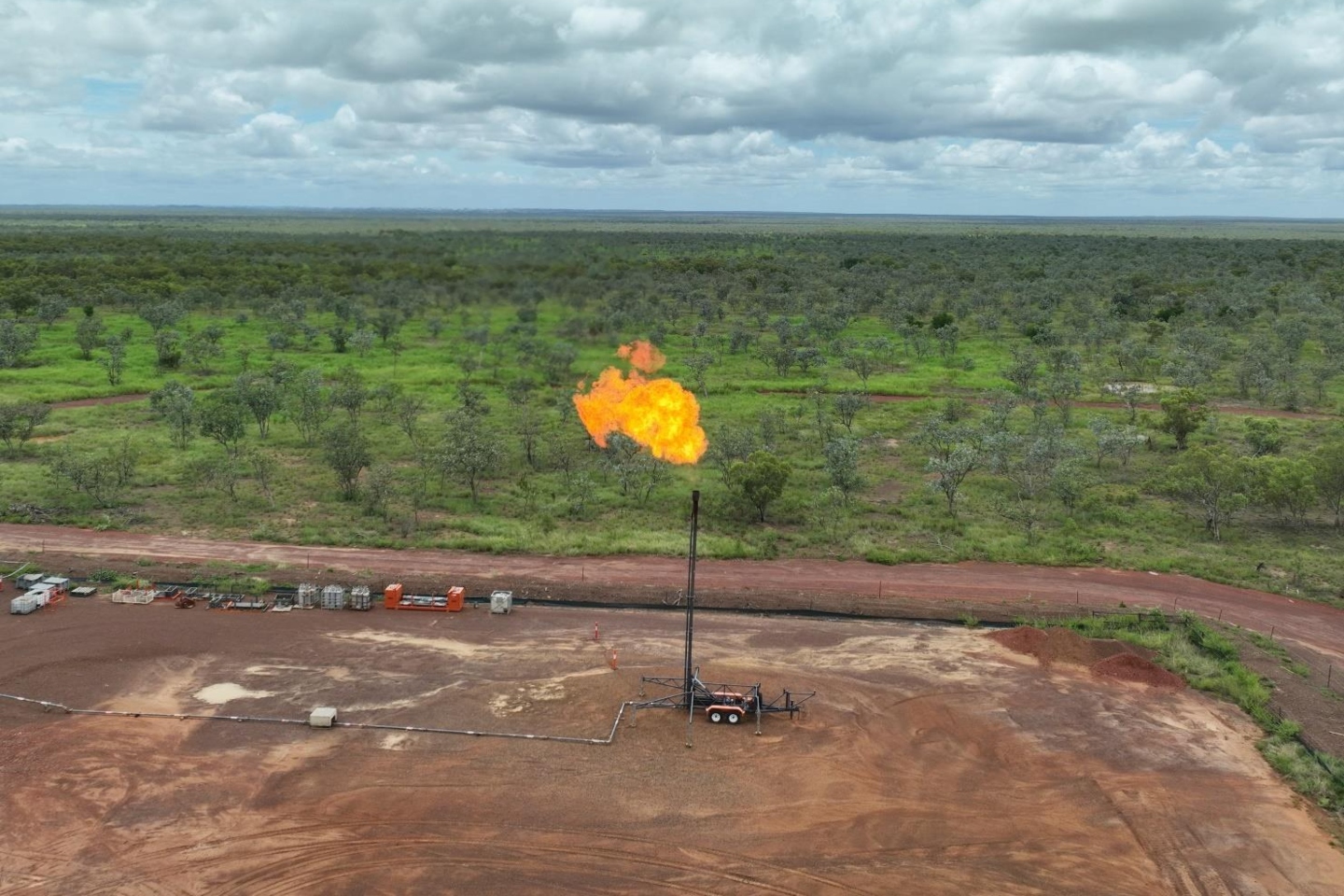Empire Energy will pay down its US debt to Macquarie and put a bit over A$3m in the tin to chase gas in the Northern Territory’s Beetaloo basin after offloading its US oil and gas assets for about A$14 million. The company is poised to take on the Australian east coast gas supply dilemma with its Beetaloo ground modelled to generate a project net present value for phase two of $2.5 billion and $14.5 billion for phase three.

Empire Energy Group will pay down its US debt to Macquarie and put a bit over A$3m in the tin to chase gas in the Northern Territory’s Beetaloo Sub Basin after offloading its US oil and gas assets in the Appalachian region for about A$14 million. The company is poised to take on the Australian east coast gas supply dilemma with its Beetaloo ground 500kms south east of Darwin modelled to generate a project net present value for phase two of $2.5 billion and $14.5 billion for phase three.
Empire’s 100 per cent owned subsidiary Imperial Oil & Gas is the holder of the largest acreage position in the Beetaloo with more than 113,000 square kilometres of ground.
Whilst no companies are yet producing commercial gas from the Northern territory’s Beetaloo Sub Basin Empire is in a race to be first. The region is generally considered to hold almost biblical scale gas deposits that could make WA’s massive North West gas project a little pale by comparison.
At last report Empire had $17.3m in the bank and the sale of the US assets will add $3.36m to its already substantial kitty after paying down some debt.
The company’s key focus is on developing is Beetaloo contingent gas resource which already sits at a total of 1.63Tcf of gas and 3.5 million barrels (MMbbls) of liquids for the mid case.
The sale transaction is expected to be completed today however Empire will keep one foot in the door in the US by retaining a 3.75 per cent free-carried working interest in the Appalachian shale play.
Empire says it is now a “pure-play Beetaloo” developer, taking aim at being the first company to produce gas commercially from the sub basin. It is looking to sell gas into the Northern Territory first, before tackling the chronic shortage in the east coast and its ultimate aim is to commence exports at some stage.
The company has proposed a three staged plan to initially produce up to 25 tera joules (Tj) per day in phase 1 with first revenues of $110m a year expected by 2025. Phase two will see it pump out 200TJ per day to feed the hungry Australian east coast market and phase 3 is expected to give up 1Bcf of gas a day and supply the LNG export markets.
Empire Energy Group managing director Alex Underwood said: "Empire will be a pure-play Beetaloo / McArthur Basin focused developer while retaining a freecarried interest in shale rights in the United States at little to no cost to shareholders. Empire can now focus its full attention on the development of the world class Beetaloo Basin, which in the success case will provide the people of the Northern Territory with sorely needed energy security and employment, royalty income to the Northern Territory Government, deliver large volumes of gas into the chronically undersupplied Australian East Coast market, and provide energy security for the broader Asian region via LNG export.”
Empire is maturing two areas in the Beetaloo ‑ in the east at its Carpentaria pilot project in exploration permit (EP)187 and at its West Beetaloo project within EP167 and EP168. In EP187, Empire has matured its ground further with drilling and flow testing of wells within its Carpentaria pilot project.
So far, the company has completed four wells - two vertical and two horizontal – and has achieved commercial flow rates in both of the horizontal wells being Carpentaria-2H and 3H following stimulation. All Carpentaria wells have successfully hit the shales of the Velkerri Formation which contains gas with a low carbon dioxide content of less than one per cent.
In September last year, Empire completed its record-breaking fracture stimulation at Carpentaria-3H over a massive 1989m section within the Velkerri Formation B shale unit. The hole was the longest horizontal shale well in Australia with a horizontal section of 2632m, 2374m of that being within the Velkerri shale.
Carpentaria-2H flowed at 2.81MMcf per day following soaking, from a completion length of just 927m in the Velkerri Formation B shale unit ‑ a 3MMcf per day rate normalised over a 1km completion.
The Beetaloo is a shale gas play meaning the gas is hosted within shales instead of sandstone like in a conventional play. Shale has low primary porosity and permeability so company will “stimulate” the reservoir to induce microscopic scale fractures extending away from the wells to facilitate gas flow into the wells and up to the surface.
Shale gas plays require more wells than conventional sandstone reservoir plays but are an established gas producer globally – with analogue fields in the eastern US hosted within the Marcellus Shale pumping out an eye watering 25Bcf of gas per day. To date, the Marcellus has given up a staggering 50Tcf of gas and 8.3 billion barrels of oil.
Interestingly, the gross thickness of shale reservoir at Carpentaria is about 300m – which is five times thicker than the world-famous Marcellus shales in the US.
A tremendous opportunity lies ahead for Empire with its commanding land holding in the Beetaloo and a gas market screaming for product. There is no shortage of competition vying to get gas to the market - with industry heavyweights Origin Energy, Tamboran Resources and Santos also chasing their slice.
With a nice top-up to its bank account and less distractions, Empire can now take on the Beetaloo with a laser like focus.
Is your ASX-listed company doing something interesting? Contact: matt.birney@businessnews.com.au













